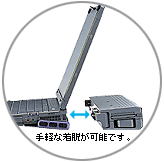PCG-XR
More actions
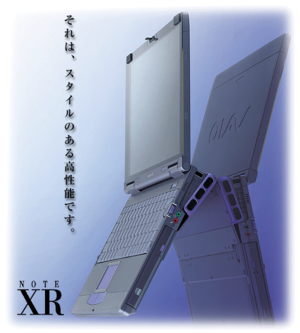
Overview
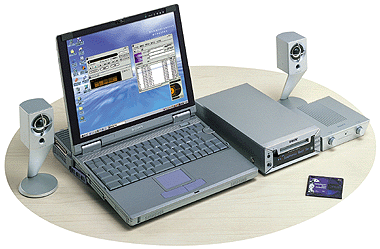
The Sony VAIO PCG-XG is a series of mid-size Pentium II-based laptops, released in 1999. It was superseded with the PCG-XG in 2000, which had the exact same design and build, but with updated specs.
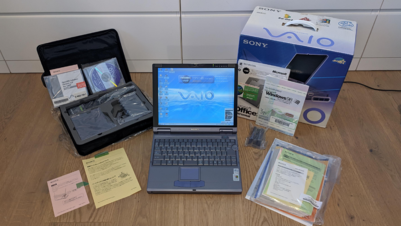
This was Sony's top of the line laptop in 1999 and has a beautiful magnesium build. It shipped with a dock which attaches to the back of the unit and is quite bulky, though it adds many inputs and outputs to the laptop, as many as a traditional desktop would have had at the time. It has a drive bay on the right hand side, which supports either a: DVD-ROM, CD-RW or Floppy drive and adding a second Battery/HDD.
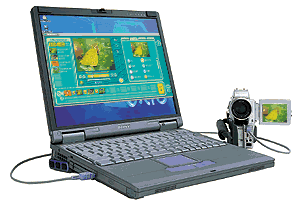
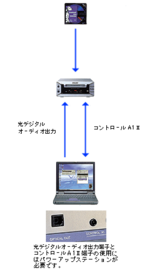
Sony intended the laptop for multimedia and work usage, as a sort of all rounder. Being their most powerful, it was a good choice for professionals and consumers who wanted a good multimedia experience, as shown in Sony's product image with the external speakers and MDS-PC2 MiniDisc drive. In the PCG-XR Dock (PCGA-PSX1), Sony added an optical out and Control A1 port, which allowed the PCG-XR to connect directly to the MDS-PC without the Sony VisionTouch serial adapter, a special feature at the time and highlighting how the PCG-XR was really meant to work with Sony products in a seamless fashion, unlike any other. Sony also created product images showing the PCG-XR editing video footage from a MiniDV camera (DCR-PC1), so it was also perfectly suited to video editing back in the day. Sony had a whole ecosystem based around the i.Link (Firewire) interface, which had various products (all released around the time of the PCG-XG/XR), such as a MiniDisc recorder, Camcorder, etc that could connect to Sony VAIOs for the "ultimate" multimedia experience.
It has a Jog-Dial on the top right, next to the keyboard assembly, which was used to scroll through text (websites, documents, etc) and an assortment of programs which Sony had created for the PCG-XR/XG, which included a photo gallery and application launcher. The PCG-XR was packed with Sony software, such as: DVgate still/motion and Smart Capture.
It has a very cool "stand" which props up the unit at the back but also helps more air into the machine for cooling along with covering the docking station port to protect it from dust. It was sort of replicated with the Pro 13 series (SVP), which used its display to prop the laptop off the ground, enhancing cooling.
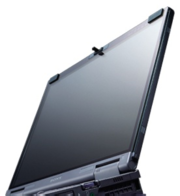
Its screen is pretty special as it was one of the first glass screens on a laptop. It has a matte Anti-Reflective coating which makes it look stunning. Overall one of the best displays on a laptop of the time.

Detailed Specs
Processor: Mobile Intel Pentium II or Celeron at 333 to 500MHz
Graphics: NeoMagic MagicMedia 256AV(NM2200)
RAM: PC100 SDRAM - 64/96MB Standard, 256MB Maximum (2 slots)
Display: 13.3 inch TFT LCD @1024x768 glass, with matte Anti-Reflective coating
Storage: 2.5" IDE - 6.4-18GB Standard
Networking: Modem
OS: Windows 98
Drives: Modular bay supporting the following: DVD-ROM, CD-RW, Floppy Drive, 2nd Battery, 2nd HDD
I/O: VGA Out, Docking connector, 1x USB, S400 i.LINK (FireWire), Headphone Out, Microphone In, Infrared, 2x PCMCIA/CardBus Slots
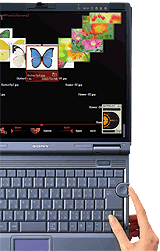
Daily Usage Today
The PCG-XR is obsolete for any modern computing task aside from text editing. Due to its NeoMagic graphics processor, it is also not especially well suited to retro gaming, though there are still plenty of games that will run on it.
These days, this is a collectors laptop, so it commands high prices.
Resources
There are no known recovery disks for this model, but one could use a patched PCG-XR disk once we finish developing our SVRP patcher for windows XP and below.
